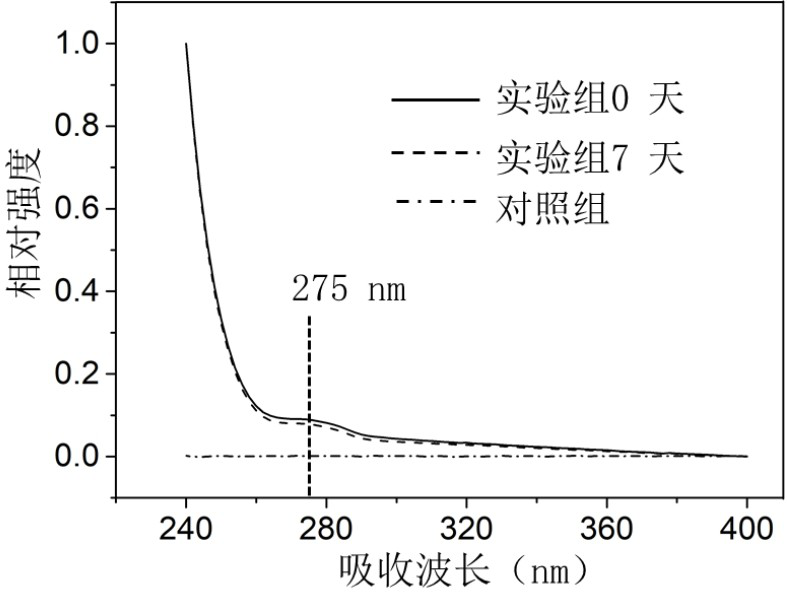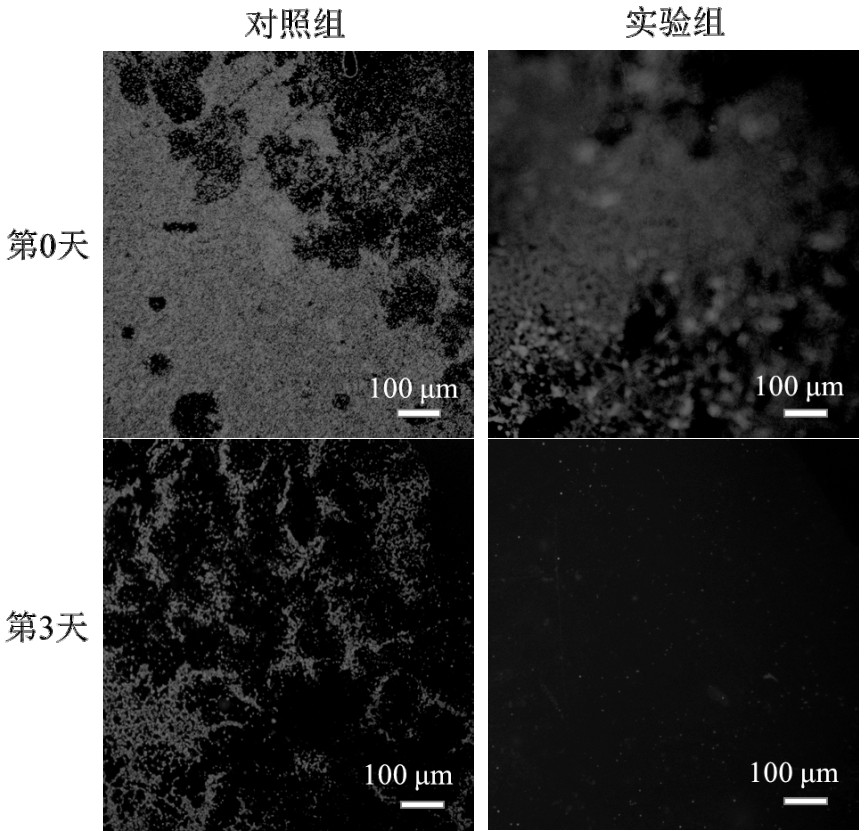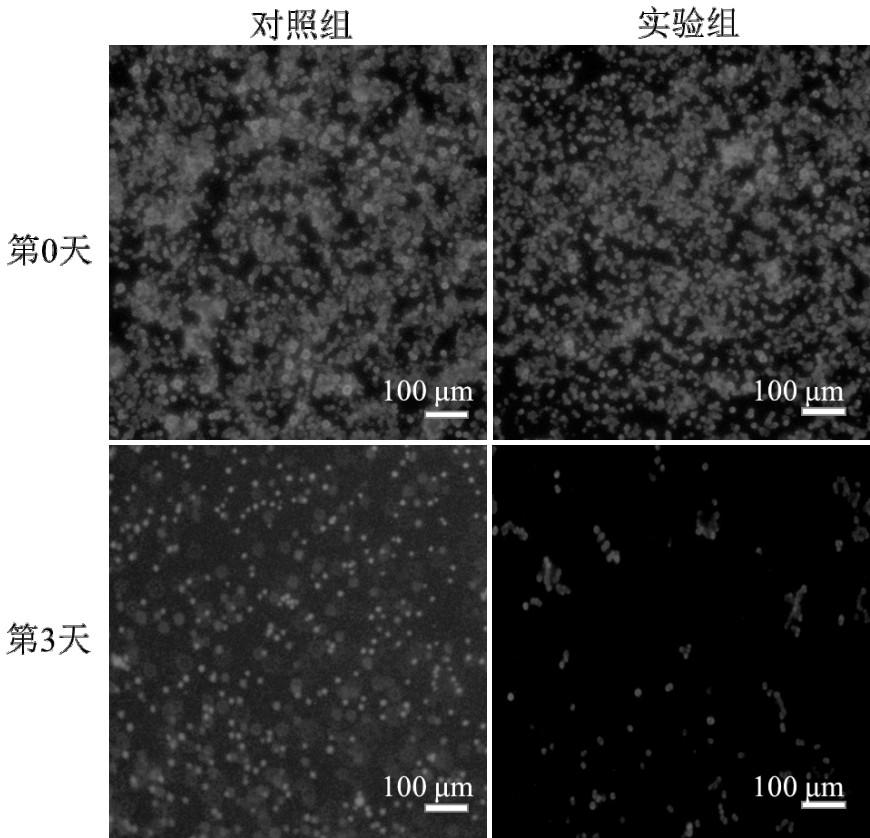Algae-inhibiting material and its application in agricultural greenhouse film
A technology for agricultural greenhouses and biomass materials, which is applied to algae-inhibiting materials and its application in agricultural greenhouse films to achieve the effects of low cost and price, meeting large-scale use and ensuring stability
- Summary
- Abstract
- Description
- Claims
- Application Information
AI Technical Summary
Problems solved by technology
Method used
Image
Examples
Embodiment 1
[0048] The present embodiment provides the application method and performance test of the algae inhibitory material on the agricultural greenhouse film:
[0049] The polyphenol used in this example is bayberry tannin (BT). The specific conditions of plant polyphenols, metal ions, biomass materials and auxiliary agents are shown in Table 1.
[0050] Table 1
[0051] .
[0052] First, the plant polyphenols and metal ions are added to the water, mixed evenly, and sprayed on the agricultural greenhouse film; then, the biomass material solution and the auxiliary are sprayed in turn. The inhibitory performance of the agricultural greenhouse film sprayed with the algae inhibitory material obtained in this example on Microcystis aeruginosa (MA) and Chlorella vulgaris (CH) was tested.
[0053] The test method is as follows: the experimental group is set as the agricultural greenhouse film coated with the algae inhibitory material, and the control group is set as the blank agricultu...
Embodiment 2
[0056] This example is used to illustrate the performance test of the polyphenol-metal nanoparticles formed by the same polyphenol and various metal ions in inhibiting Microcystis aeruginosa and Chlorella:
[0057] In this example, the polyphenol is myricetium tannin (BT), and the other components are shown in Table 2.
[0058] Table 2
[0059] .
[0060] For the algae-inhibiting material prepared above, a solid medium was used to replace the agricultural greenhouse film, and the algae-inhibiting material was coated on the medium containing Chlorella vulgaris and Microcystis aeruginosa respectively, and its effect on Chlorella vulgaris and Microcystis aeruginosa was determined respectively. The inhibitory performance of Microcystis; set the experimental group to be the medium coated with the algae inhibitory material, the control group to be the medium not coated with the algae inhibitory material, and the samples of the experimental group and the control group were placed ...
Embodiment 3
[0062] This example is used to illustrate the influence of algae inhibitory material on the light transmittance of agricultural film:
[0063] The bayberry tannins (BT) and Cu 2+ The solution is added into water at a concentration ratio of 4:1, mixed evenly, sprayed on the agricultural greenhouse film, and then sprayed with sodium alginate solution with a concentration of 1.5%, and finally sprayed with pH=7.4 sodium dihydrogen phosphate and dodecahydrate disodium hydrogen phosphate mixed solution to obtain the algae-inhibiting nano-coating adhered on the agricultural film.
[0064] Light transmittance test method: The light transmittance test was carried out on the agricultural greenhouse film coated with the algae inhibitory material obtained in this example. The transmittance test is to use a UV-Vis-NIR spectrometer (PerkinElmer PE1050) to test the transmittance in the wavelength range of 250 - 2500 nm. The test performance is as follows Image 6 shown. Image 6 Transmiss...
PUM
| Property | Measurement | Unit |
|---|---|---|
| transmittivity | aaaaa | aaaaa |
Abstract
Description
Claims
Application Information
 Login to View More
Login to View More - R&D
- Intellectual Property
- Life Sciences
- Materials
- Tech Scout
- Unparalleled Data Quality
- Higher Quality Content
- 60% Fewer Hallucinations
Browse by: Latest US Patents, China's latest patents, Technical Efficacy Thesaurus, Application Domain, Technology Topic, Popular Technical Reports.
© 2025 PatSnap. All rights reserved.Legal|Privacy policy|Modern Slavery Act Transparency Statement|Sitemap|About US| Contact US: help@patsnap.com



